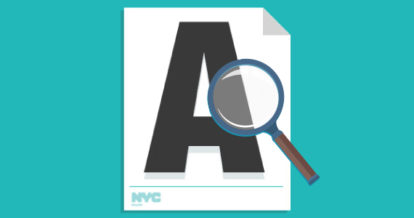To err is human. But, by golly, restaurant marketing errors aren’t forgiven so easily. While some restaurant marketing blunders often get a good chuckle, it’s all fun and games until you’re the butt of the joke – or have successfully offended a portion of your customers.
Restaurants were the subject of scrutiny long before the advent of Facebook and Yelp, but the word of mouth was somewhat contained before the explosion of social media. Now, however, marketing blunders can easily transform into viral catastrophes that subject your restaurant to public humiliation. What may begin as a small misstep now has the potential to become enshrined within the permanent memory of the internet. No pressure.
Here are seven restaurant blunders and lessons that you can take away in order to avoid them.
Lost in Translation: KFC
Translation is a fickle thing. Typically, we see translation fails from well-meaning restaurants who, instead of advertising “chicken and bean sprouts” write, “meat muscle stupid bean sprouts.” Appetizing. Well, back in the 80s when KFC expanded into China, the fried chicken chain translated its slogan, “Finger lickin’ good” to “Eat Your fingers off.” Yum.
The lesson: Always vet translations with a translator whose native tongue is the language you’re translating to. Google translate isn’t that good.
Hashtag Hijacking: McDonald’s
Share your McDonald’s story. This was the premise of McDonald’s #McDStories campaign. But instead of heartwarming tales of engagements or new friendships, McDonald’s was sent to trial as users shared tales of McDonald’s’ failures, like, “My brother finding a fake fingernail in his fries #McDStories”.
The lesson: Restaurant social media has the power to unleash the good, the bad, and the ugly. And while you can monitor the conversation, you can’t control it entirely. Make sure you know your audience as well as possible before inviting customer tales in an open forum – and be prepared for backlash.
Highjacking the Hashtag: DiGiorno
#WhyIStayed is a hashtag about domestic abuse that aims to raise awareness and allow people to share personal experiences. When DiGiorno tweeted, “#WhyIStayed You had pizza.”, social media erupted with disapproval at the insensitivity of the hashtag highjacking. It’s a mistake made by the social media manager, who in this case saw the hashtag trending and tweeted without doing their research.
The lesson: Always search a hashtag’s history before you post with it. See something trending? Look into why it’s trending. It’s easy to neglect due diligence, so make hashtag vetting second nature.
Standing Still: Carrefour
Sometimes the worst thing you can do is … nothing. French supermarket chain Carrefour carried on with traditional forms of marketing like billboard and print ads while their largest competitors entered new frontiers of digital marketing.
The lesson: Keep up with the times … and your competitors. Marketing trends move quickly, and it’s important to understand the current marketing landscape so you can decide what will work for your restaurant and resonate with a 2017 audience. Monitor your competitors’ marketing campaigns so they don’t suddenly whiz past you and steal current and potential customers.
Immature Innuendos: IHOP
Body shaming: never a good social media practice. IHOP learned the hard way when they tweeted, “Flat but has a GREAT personality” along with a photo of butter-dolloped pancakes. *facepalm*
The lesson: While we’re all trying to be cutting edge amongst a sea of tweets, you can can still be tongue in cheek without crossing the line. First, write some brand guidelines that delineate what’s appropriate and what’s not. Always encourage your social media staff to seek a second pair of eyes on posts that might raise an eyebrow. Also: hire people you trust to manage your social profiles.
Plain Old Offensive: Bud Light
Bud Light missed the mark entirely with their “Up for Whatever” campaign, which ran by the slogan, “for removing ‘No’ from your vocabulary for the night.” Messaging that encourages non-consent should be avoided. No exceptions.
The lesson: When you’re writing about controversial topics, make sure you’re considering everyone’s point of view. Consider the current cultural context as a whole, beyond your brand. When in doubt, consult a diverse panel of trusted advisors who have different backgrounds and value systems from your own.
Tone-deaf and Tasteless: Stone Brewing
When Stone Brewing tweeted, “Something to remember on #MemorialDay. It’s a LOT better and a LOT more memorable with #craftbeer!”, they were criticized for disarming the true message of Memorial Day while capitalizing on the losses of veterans.
The lesson: While consumer holidays are okay to use to your promotional advantage, always be mindful of the history of the holiday. Maybe capitalizing on people who have lost their lives in service isn’t such a great idea? Remember: you’re a brand. Consumers can sniff out a veiled advertisement quick.
Everyone is trying to push the envelope, strike a chord with their audience, and stand out against the rest. But with strict brand guidelines, a second pair of eyes, and due diligence, you can avoid a costly marketing blunder.
Free social media templates for your restaurant
Sign up for our free weekly TouchBistro Newsletter







